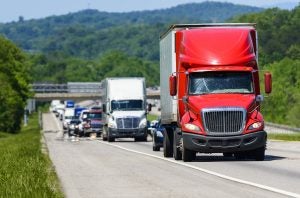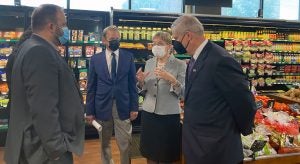New Year’s Eve 2020 was a significant holiday. At least, it felt that way. After a year that we barely survived, there was so much hope and optimism that we could start over in 2021. Unfortunately, world circumstances don’t disappear when you change the calendar. And we’re still reeling from so many things that interrupted our “normal” lives.
The last two-and-a-half years have taught us a lot and exposed some worrisome problems. We realized that we weren’t prepared to handle a public-health crisis when we ran out of important medical supplies during a critical moment. We experienced the importance of mental health and how social isolation can deteriorate it. And we learned that when the apocalypse looms, everyone needs to grab as much toilet paper as possible. (I’m mostly being facetious. But as an almost-victim of the Great Toilet Paper Shortage of 2020, my supplies are now well stocked.)
But perhaps the most enduring lesson we learned is that our supply chains are incredibly vulnerable. For most of us, the creation, transportation, and sale of consumer goods happens without us noticing. We simply go to the store and purchase the items we need. We never stop to contemplate how those products got on the shelves. As the current baby-formula shortage reminds us, there’s a lot we take for granted.

But moments like this are an opportunity for reflection. The weaknesses in our modern lives are exposed, and we can address them before the next big thing happens.
So when the U.S. Department of Agriculture announced a massive spending project aimed at shoring up supply chain problems and creating a more resilient food system, it sounded completely rational. Most of the spending seems aimed toward reaching those goals: $375 million for expanding independent meat processors; $400 million to create regional food business centers; and $600 million in financial assistance to support the food-supply-chain infrastructure.
Fantastic. That all sounds great.
But that wasn’t all. The USDA also plans on spending $300 million to help farmers transition to organic production.
What??
USDA Secretary Tom Vilsack defended this funding for organic farmers by suggesting it would somehow make farmers more profitable. In theory, organic products sell for a higher price. Vilsack believes that means farmers will see a larger portion of the sale price.

That’s a mighty big assumption that, to my knowledge, isn’t supported by any research or other evidence. Even if organic products fetch a higher retail price, organic yields are significantly lower than conventionally grown food. If you have less to sell, the price has to be higher to make the same money. And if the USDA successfully adds hundreds of millions of dollars in support, all those new organic farms will flood the market and drive prices down anyway.
And while we’re on the subject of lower yields, I can’t fathom why the USDA would champion the organic program to shore up supply chains. During the next global crisis, I want American farmers to grow more food, not less. The National Organic Program is about a label and marketing, not an assessment of safety, quality, or best practices. You don’t create a resilient food system based on a sticker.
Instead we need a food system that is abundant, adaptive, responsive, and progressive. Not one stuck in a marketing scheme that arbitrarily decides what’s “synthetic” and what’s “natural.” We can achieve that by opening up new markets, reducing the cost of modern equipment and technology, stabilizing our supplies of pesticides and fertilizers, and investing in new research.
Funding transitioning farmers doesn’t invest in the right things. In fact, it’s so wildly random that it seems more like a pay off to special interests than a solution to our challenges.
With record inflation and quickly rising fuel prices, we’re possibly sitting on the brink of the next economic crisis. Farmers need the USDA to address those economic hurdles now. Secretary Vilsack better start paying attention before it’s too late.
Amanda Zaluckyj blogs under the name The Farmer’s Daughter USA. Her goal is to promote farmers and tackle the misinformation swirling around the U.S. food industry.



